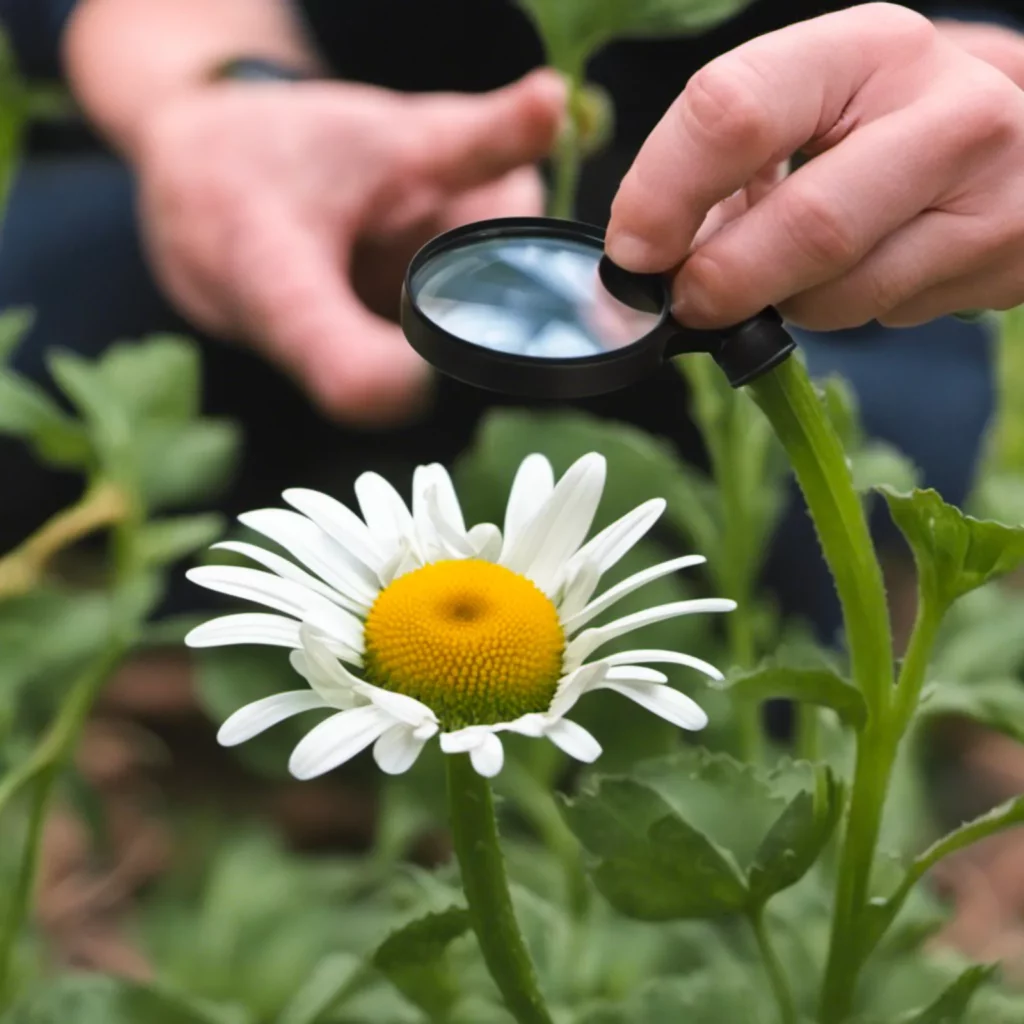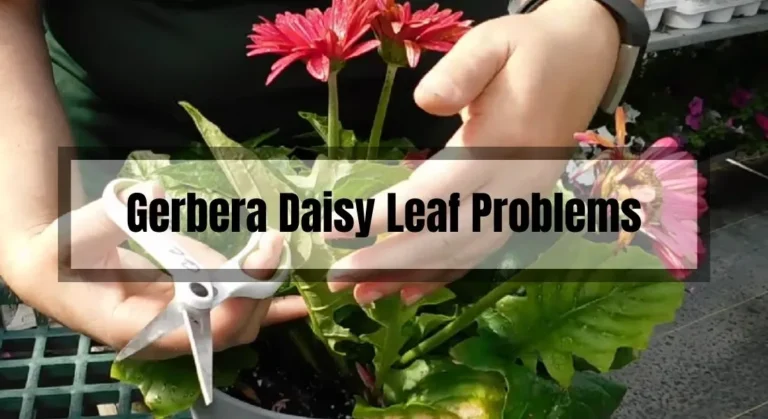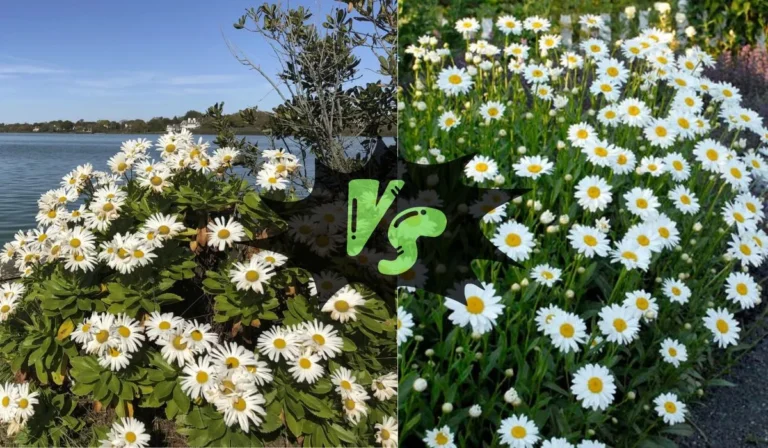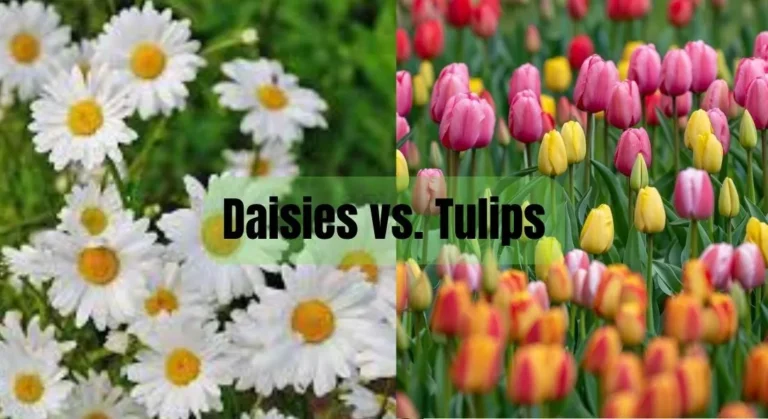Shasta Daisy Problems: Common Issues and Easy Solutions
Shasta daisies are a favorite among gardeners for their beautiful white petals and yellow centers. However, like any plant, they can face issues like diseases and pests, which can lead to stunted growth, yellowing leaves, and even death.
Common problems include powdery mildew, root rot, and aphids, often triggered by factors like improper watering, poor soil quality, and insufficient sunlight.
Identifying these issues early is crucial to prevent further damage. In the next section, we’ll delve into the causes of Shasta daisy problems in more detail.
Key Takeaways
- Shasta daisies can be susceptible to various diseases and pests, which can cause stunted growth, yellowing leaves, and even death.
- Common problems include powdery mildew, root rot, and aphids, which can be caused by improper watering, poor soil quality, and lack of sunlight.
- Early identification of the problem is essential to prevent it from spreading and causing further damage to the plant.

Shasta Daisy Problems
Shasta daisies are a popular and hardy perennial that can brighten up any garden. However, they can be susceptible to a few problems that can affect their growth and overall health.
In this section, we will discuss some common issues with Shasta daisies, how to prevent them, and treatment options.
Common Issues
Here are some common issues that can affect Shasta daisies:
- Overwatering: Shasta daisies don’t like to be overwatered, and doing so can lead to root rot and other diseases. Make sure to water them deeply once a week, and ensure that the soil has good drainage.
- Underwatering: On the other hand, if Shasta daisies don’t receive enough water, they can become stressed and more susceptible to pests and diseases. Make sure to water them regularly, especially during hot and dry weather.
- Poor Soil Conditions: Shasta daisies prefer well-draining soil that is rich in organic matter. If the soil is too compact or heavy, it can lead to root rot and other diseases. Make sure to amend the soil with compost or other organic matter before planting.
- Pests: Shasta daisies can be affected by a variety of pests, including aphids, spider mites, and thrips. Keep an eye out for any signs of infestation, such as yellowing leaves or distorted growth, and treat with an insecticidal soap or other appropriate product.
- Diseases: Shasta daisies can be affected by a variety of diseases, including powdery mildew, verticillium wilt, and rust. Make sure to remove any infected plant material and treat with a fungicide if necessary.
Prevention Methods
Here are some prevention methods to help avoid common issues with Shasta daisies:
- Watering: Make sure to water Shasta daisies deeply once a week, and ensure that the soil has good drainage. Avoid overwatering or underwatering, as both can lead to problems.
- Soil Conditions: Ensure that the soil is well-draining and rich in organic matter. Amend the soil with compost or other organic matter before planting.
- Pest Control: Keep an eye out for any signs of pests, and treat with an insecticidal soap or other appropriate product. Encourage natural predators, such as ladybugs and lacewings, to help control pest populations.
- Disease Control: Remove any infected plant material and treat with a fungicide if necessary. Avoid overhead watering, which can lead to the spread of diseases.
Treatment Options
Here are some treatment options for common issues with Shasta daisies:
- Overwatering: If you’ve overwatered your Shasta daisies, make sure to allow the soil to dry out before watering again. Consider repotting in fresh, well-draining soil if root rot has set in.
- Underwatering: If you’ve underwatered your Shasta daisies, make sure to water them deeply and regularly. Consider mulching around the plants to help retain moisture.
- Pest Control: Treat with an insecticidal soap or other appropriate product. Encourage natural predators, such as ladybugs and lacewings, to help control pest populations.
- Disease Control: Remove any infected plant material and treat with a fungicide if necessary. Avoid overhead watering, which can lead to the spread of diseases.
What Causes Shasta Daisy Problems?
Shasta daisies are tough and reliable perennials that can survive in a wide range of conditions. However, they are not immune to problems. Here are some of the most common causes of Shasta daisy problems:
1. Overwatering
Shasta daisies prefer well-draining soil and do not like to sit in water. Overwatering can lead to root rot, which can kill the plant. Signs of overwatering include yellowing leaves and wilting.
2. Underwatering
On the other hand, underwatering can also cause problems for Shasta daisies. When the soil is too dry, the plant cannot absorb enough water and nutrients. This can lead to stunted growth and yellowing leaves.
3. Lack of Sunlight
Shasta daisies need at least 6 hours of direct sunlight per day to thrive. If they are planted in a shady spot, they may not flower or grow as well. If you notice your Shasta daisies are struggling, try moving them to a sunnier location.
4. Poor Soil Quality
Shasta daisies prefer well-draining soil that is rich in organic matter. If the soil is too compacted or lacks nutrients, the plant may not grow well. Consider adding compost or other organic matter to improve the soil quality.
5. Pests and Diseases
Shasta daisies can be susceptible to a variety of pests and diseases, including aphids, spider mites, and powdery mildew.
Keep an eye out for signs of infestation, such as yellowing leaves or webbing on the plant. Treat the problem as soon as possible to prevent it from spreading.
6. Improper Pruning
While Shasta daisies do not require regular pruning, they may benefit from deadheading. This involves removing spent flowers to promote new growth and prevent the plant from going to seed. However, if you prune too much or at the wrong time, you may damage the plant.
By understanding the common causes of Shasta daisy problems, you can take steps to prevent them from occurring in your garden. With a little care and attention, your Shasta daisies can thrive and provide beautiful blooms year after year.
How to Identify Shasta Daisy Diseases?

Shasta daisies are a beautiful addition to any garden, but they can be susceptible to various diseases. Here are some signs to look out for when identifying Shasta daisy diseases:
Powdery Mildew
Powdery mildew is a common disease that affects Shasta daisies. It appears as a white or gray film on the leaves and stems. As the disease progresses, the leaves may start to yellow and die.
To prevent powdery mildew, make sure your Shasta daisies are planted in a location with good air circulation and avoid overhead watering.
Leaf Spot
Leaf spot is a fungal disease that causes circular spots on the leaves of Shasta daisies. The spots may be brown or black and can cause the leaves to yellow and drop prematurely.
To prevent leaf spot, avoid overhead watering and remove any infected leaves as soon as possible.
Rust
Rust is a fungal disease that causes orange or yellow spots on the leaves of Shasta daisies. The spots may also have a powdery appearance. Rust can cause the leaves to turn yellow and drop prematurely.
To prevent rust, avoid overhead watering and remove any infected leaves as soon as possible.
Verticillium Wilt
Verticillium wilt is a fungal disease that causes the leaves of Shasta daisies to wilt and turn yellow. The disease can also cause stunted growth and premature death of the plant.
To prevent verticillium wilt, make sure your Shasta daisies are planted in well-draining soil and avoid over-watering.
Aphids
Aphids are small, pear-shaped insects that can cause damage to Shasta daisies by sucking the sap from the leaves and stems. Signs of an aphid infestation include distorted leaves and yellowing foliage.
To prevent aphids, keep your garden free of weeds and remove any infected plants as soon as possible.D
Are There Resistant Varieties?
When it comes to shasta daisies, prevention is key to avoiding problems. But even with the best care, some varieties are more susceptible to certain issues than others. So, are there resistant varieties of shasta daisies? The answer is yes!
Here are some varieties of shasta daisies that are known for their resistance to common problems:
- ‘Becky’: This variety is resistant to powdery mildew and wilt disease. It also has a longer blooming period compared to other varieties.
- ‘Crazy Daisy’: This variety is resistant to both powdery mildew and rust.
- ‘Snow Lady’: This variety is resistant to both powdery mildew and wilt disease. It also has a compact growth habit, making it perfect for smaller gardens.
- ‘Silver Princess’: This variety is resistant to both powdery mildew and rust. It also has a unique silver-colored foliage that adds interest to any garden.
When choosing shasta daisy varieties for your garden, it’s important to consider the specific problems that are common in your area. For example, if powdery mildew is a common problem, choosing a resistant variety like ‘Becky’ or ‘Snow Lady’ can help prevent issues down the line.
It’s also important to note that while resistant varieties are less likely to develop problems, they are not completely immune. Proper care and maintenance are still necessary to keep your plants healthy and thriving.
In addition to choosing resistant varieties, there are other steps you can take to prevent problems in your shasta daisy garden. These include:
- Planting in well-draining soil to prevent root rot
- Providing adequate air circulation around plants to prevent fungal issues
- Watering at the base of plants to prevent leaf spot and other moisture-related problems
- Removing infected plant material promptly to prevent the spread of disease
By taking these steps and choosing resistant varieties, you can enjoy a beautiful and healthy shasta daisy garden for years to come.
Frequently Asked Questions (FAQs)
When should I expect my Shasta daisies to bloom?
Shasta daisies typically bloom in late spring or early summer, and their flowers can last for several weeks. However, the exact timing of their blooming can vary depending on factors such as the climate, soil conditions, and the specific variety of Shasta daisy you have planted.
Why aren’t my Shasta daisies blooming?
If your Shasta daisies are not blooming, there could be several reasons why. One common reason is that they are not getting enough sunlight. Shasta daisies require full sun to thrive and produce flowers, so make sure they are planted in a location that receives at least six hours of direct sunlight per day. Another reason could be that they are not getting enough water. Shasta daisies prefer well-draining soil, but they still need to be watered regularly, especially during dry spells.
How often should I water my Shasta daisies?
Shasta daisies are drought-tolerant plants, but they still need to be watered regularly, especially during hot, dry weather. Water them deeply once a week, making sure the soil is moist but not waterlogged. Avoid getting water on the foliage or flowers, as this can lead to disease.
Is it necessary to cut back Shasta daisies?
Cutting back your Shasta daisies after they have finished blooming can help keep them healthy and promote new growth. Use clean, sharp pruning shears to cut the stems back to about 6 inches above the ground. This will encourage the plant to produce new foliage and prepare for next year’s blooming season.
Are Shasta daisies invasive in my area?
While Shasta daisies are not considered invasive in most areas, they can spread quickly if not properly maintained. To prevent them from taking over your garden, make sure to deadhead the flowers regularly and cut back the plant after blooming season. Additionally, keep an eye out for any signs of self-seeding and remove any seedlings that appear in unwanted areas.
Conclusion
In conclusion, Shasta daisies are a beautiful and hardy perennial flower that can add color and charm to your garden. However, they are susceptible to a number of problems that can cause them to wilt, die, or fail to thrive. By understanding the common issues that can affect your Shasta daisies, you can take steps to prevent or treat them and keep your flowers healthy and vibrant.
Here are some key takeaways from this article:
- Shasta daisies can be affected by a range of pests and diseases, including aphids, powdery mildew, and wilt disease.
- Proper watering and fertilization can help prevent some common problems, such as root rot and nutrient deficiencies.
- Regular pruning and deadheading can help keep your Shasta daisies looking their best and promote healthy growth.
- If you notice any signs of distress in your Shasta daisies, such as yellowing leaves, wilting, or discoloration, it’s important to act quickly to diagnose and treat the problem.
Remember, taking good care of your Shasta daisies is essential for keeping them healthy and beautiful. By following the tips and advice outlined in this article, you can help ensure that your flowers thrive and bring joy to your garden for years to come.




